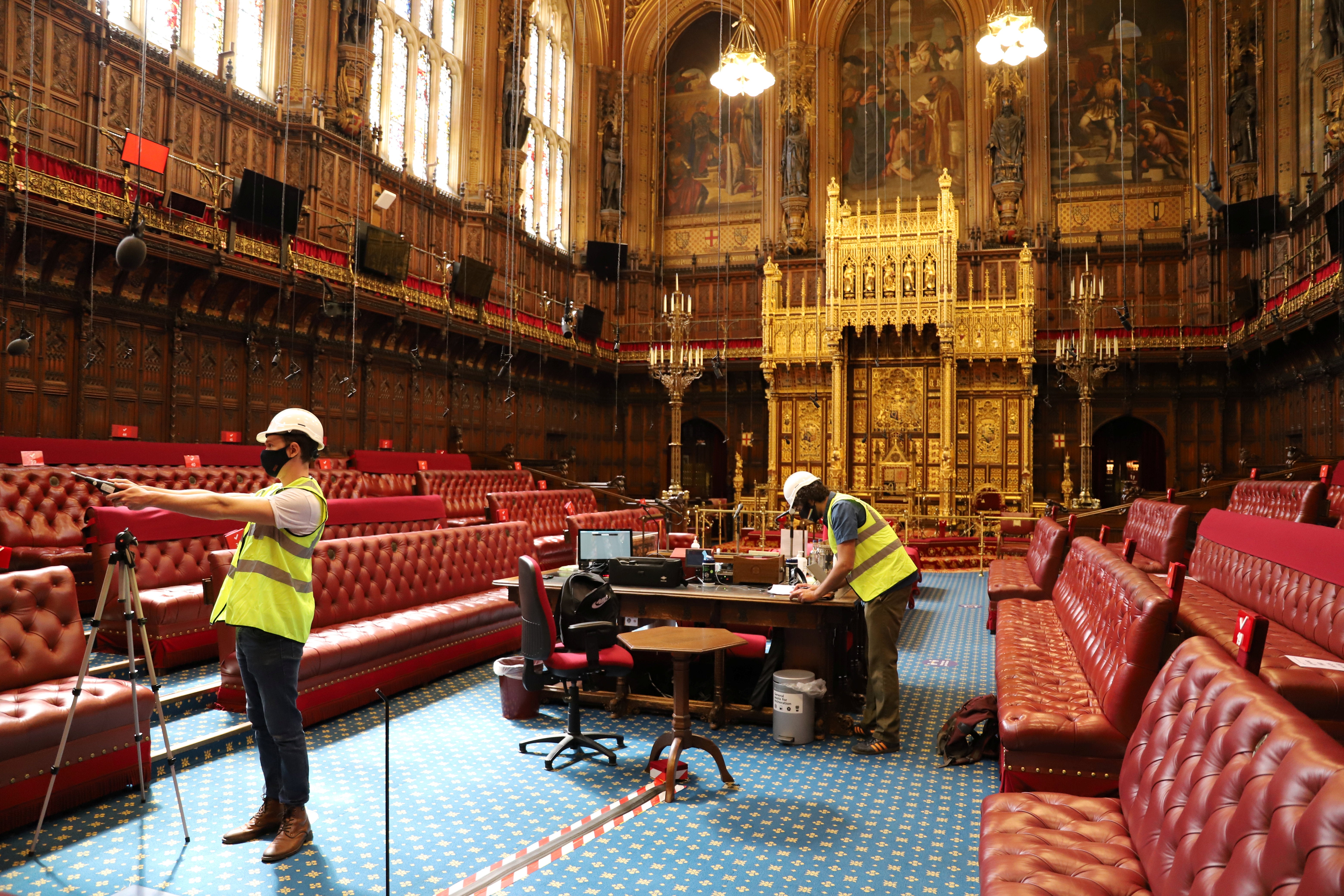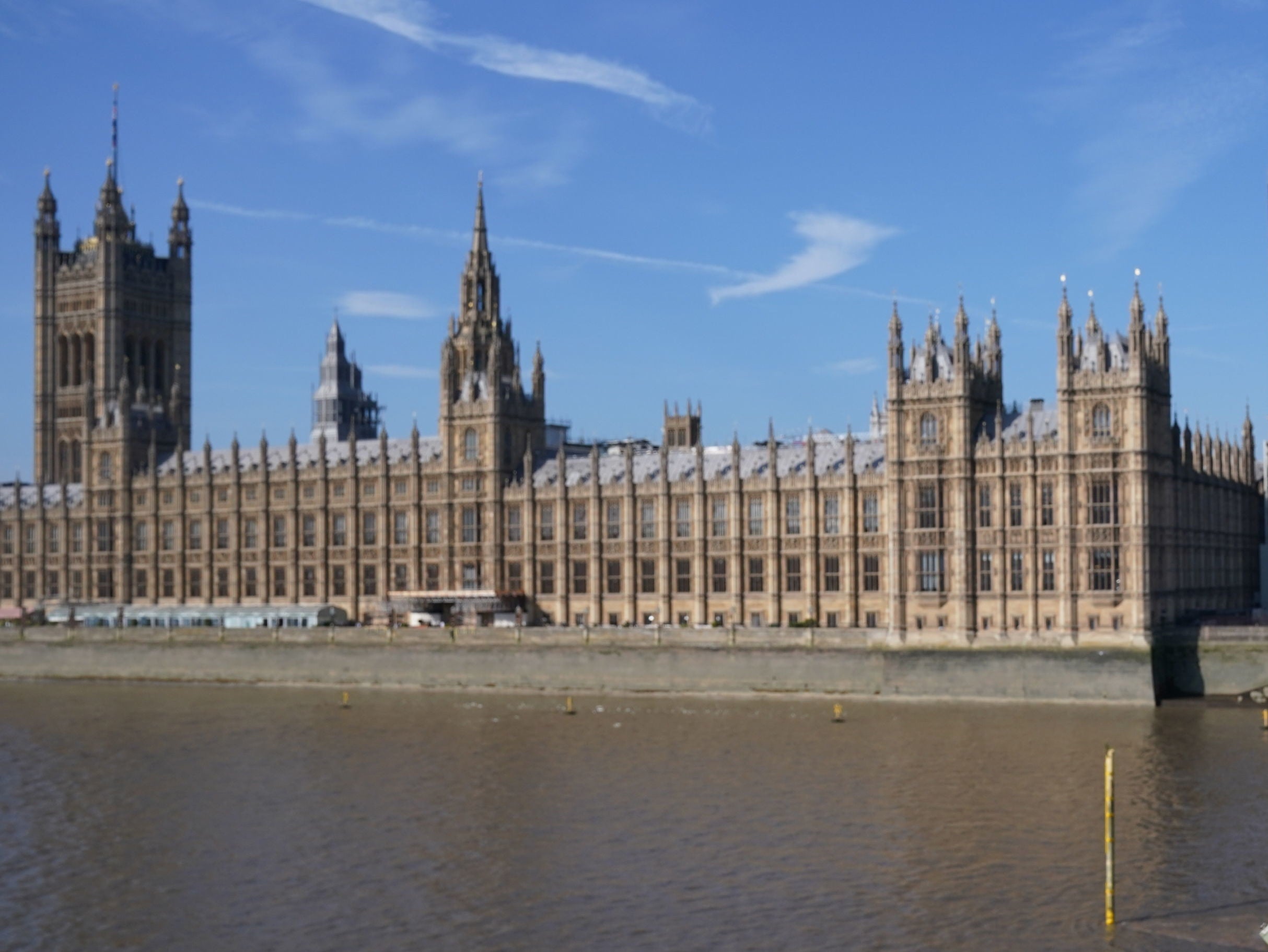Parliament’s Victorian walls and ceilings are crumbling
The Palace of Westminster is a UNESCO World Heritage Site

Your support helps us to tell the story
From reproductive rights to climate change to Big Tech, The Independent is on the ground when the story is developing. Whether it's investigating the financials of Elon Musk's pro-Trump PAC or producing our latest documentary, 'The A Word', which shines a light on the American women fighting for reproductive rights, we know how important it is to parse out the facts from the messaging.
At such a critical moment in US history, we need reporters on the ground. Your donation allows us to keep sending journalists to speak to both sides of the story.
The Independent is trusted by Americans across the entire political spectrum. And unlike many other quality news outlets, we choose not to lock Americans out of our reporting and analysis with paywalls. We believe quality journalism should be available to everyone, paid for by those who can afford it.
Your support makes all the difference.Parliament’s walls and ceilings are crumbling so badly experts spent thousands of hours surveying cracks and defects around the decrepit Victorian stonework.
Engineers planning the much-needed restoration to the Palace of Westminster have been examining its crumbling stones, cracking ceilings and warping windows in detail.
Over 50 architectural surveyors, ecologists, acoustics and lighting specialists, spent a combined 4,700 hours over Parliament’s recent recess probing the building.
Problems were uncovered in many of the historic features, including original Victorian stained-glass windows, which are warping and sagging due to age.
Surveyors also studied the enormous basement and the miles of outdated and interweaving gas, electrics, water, sewage, and heating pipes to get up to date records on the problems that need fixing.
The building is at high risk of sudden failure from major fire, flood or stone fall, the heating, ventilation, water, and electrical systems are outdated and steam pipes run alongside electrical cables throughout the building, the experts warned.
The Palace of Westminster is a UNESCO World Heritage Site and one of the most recognisable buildings in the world, but despite a programme of maintenance works, it’s falling apart faster than it can be fixed and is in urgent need of a programme of essential restoration.

Thousands of ventilation shafts spreading the length and breadth of the building need upgrading to protect against a major fire, the experts said.
Due to this high risk, a team of fire wardens patrol the building 24 hours a day to spot and manage fires or incidents that could lead to a blaze, with a new water misting system installed in the last few years.
It costs £2 million a week to keep the building going, with the annual cost of maintenance and ongoing projects recently doubling - rising from £62m in 2016 to £127m in 2019, totalling £369m over the four-year period.
According to the surveyors, more than 40,000 problems with the building have been reported since 2017.
In total 2,343 rooms and spaces were examined by engineers over the summer, with experts recording thousands of problems including cracks in stonework, widespread water damage, and analysing the complex network of outdated electrical and mechanical systems.
It meant the experts built the most detailed record of the 150-year-old Houses of Parliament ever created.
The investigations are an essential step in the restoration and renewal of the Palace of Westminster that Parliament will be invited to approve in 2023.
Jacob Rees-Mogg MP, leader of the House of Commons, said: “The Houses of Parliament building is recognised the world over as a symbol of our nation, but this building requires a considerable level of care to keep it working and needs an essential programme of restoration work.
“We must be able to justify this project to taxpayers. That’s why it’s so important to understand and map out the restoration work needed to protect the building - so that the focus is on those essential works necessary to preserve the Palace for future generations.”
In the basement there are 128 plant rooms and 98 risers, only one of which has been fully restored to modern standards and the sewage ejector system installed in 1888 is still in use today, the engineers said.
There are also seven miles of steam pipes and 250 miles of cabling, all of which need to be stripped out.
Work was also done to understand the origin of the quirky candle and gas light fittings, some of which were discovered to have been turned upside down when converted to electric power over 100 years ago.
Further investigation is ongoing but it is thought the Palace may contain the oldest still-in-use gas lighting system in the world, a spokesman for the Commons said.
Several remarkable candle chandeliers that survived the great fire of 1834 which destroyed the original palace were also studied and recorded.
There are over 11,000 historic items, including historic furniture, clocks, silver and ceramics, all of which will need to be temporarily removed and taken care of during restoration.
Acoustics experts working out how to improve audibility within the building, walked around 150 miles, measuring 80 rooms, running 300 individual acoustics tests, taking 2,000 measurements.
Experts in ecology and door specialists from Manchester, window surveyors from Glasgow and architects and engineers from across London, in addition to historic surveyors and specialists from Cambridge, Suffolk and Hampshire were involved in the building investigations.
Sarah Johnson, CEO of the Houses of Parliament Restoration & Renewal Sponsor Body, said: “The essential programme to restore the deteriorating Palace of Westminster will protect our world-famous Parliament for generations to come. These critical and complex investigations are already informing our detailed restoration plan, which will for the first time set out a true sense of the costs and timescales of the much-needed work.”
Parliament’s repair teams run constant maintenance work for safety reasons, but a larger programme of essential restoration work is needed to protect the building for the future, the experts added.
In winter and throughout next year even more detailed surveys, including ‘intrusive’ surveys into the structure of the Palace, will be completed to continue building the most detailed record of the Palace ever created.
SWNS



Join our commenting forum
Join thought-provoking conversations, follow other Independent readers and see their replies
Comments